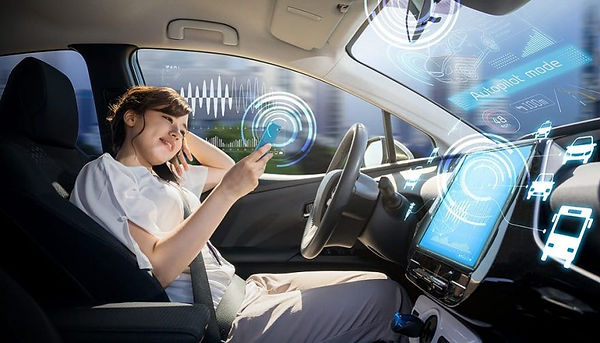
AUTONOMOUS VEHICLES
Autonomous Vehicles
An autonomous vehicle is one that can drive itself from a starting point to a predetermined destination in “autopilot” mode using various in-vehicle technologies and sensors, including adaptive cruise control, active steering (steer by wire), anti-lock braking systems (brake by wire), GPS navigation technology, lasers and radar. Self-driving vehicles are cars or trucks in which human drivers are never required to take control to safely operate the vehicle. Also known as autonomous or “driver-less” cars, they combine sensors and software to control, navigate, and drive the vehicle.
Currently, there are no legally operating, fully-autonomous vehicles in the world. There are, however, partially-autonomous vehicles—cars and trucks with varying amounts of self-automation, from conventional cars with brake and lane assistance to highly-independent, self-driving prototypes. Different cars are capable of different levels of self-driving. Though still in its infancy, self-driving technology is becoming increasingly common and could radically transform our transportation system (and by extension, our economy and society).
Autonomous Vehicles for School Students
With the rise of autonomous self driving vehicles, individual transportation can be utilized by not only adults but children. These children will have unique demands for the cars that they use. Automatic crash avoidance, interactive display panels and unique seating arrangements will allow tomorrows youth to readily adopt this new individual transportation system. Having the keys to your very own car at a young age will teach kids responsibility and provide them with a feeling of individuality in an increasingly anonymous world. No longer will parents need to drive their children to school or soccer practice, freeing parents to focus on other aspects of life.
These vehicles can either entertain the children while en route or the on-board interactive display can be used to teach the children. This effectively makes the educational process begin as soon as the occupant boards the vehicle.

Key Benefits
-
Economic benefits: Once autonomous cars are fully integrated within our transport systems, experts project that the economic benefits to society will be vast.
-
Social benefit – lives saved: By removing manual driving controls from humans, autonomous vehicles would eradicate all fatalities involving human error.
-
Accessibility for those who cannot drive
-
Quicker commute times
-
Environment friendly because many of the companies aim to use electric driverless vehicles which reduce the amount of emissions being released into the atmosphere. Excessive speed, braking and re-accelerating all release large amount of emissions from a car.
-
People who don’t like driving: With autonomous cars, the time spent paying attention to the road will be freed up for a variety of other pursuits, such as sleeping, watching tv or catching up on some work.
Learning Outcomes
Upon successful completion of this course, students will have the knowledge and skills to:
UNDERSTAND
Understand commonly used hardware used for self-driving cars.
IDENTIFY
Identify the main components of the self-driving software stack.
ANALYZE
Analyze the safety frameworks and current industry practices for vehicle development.




